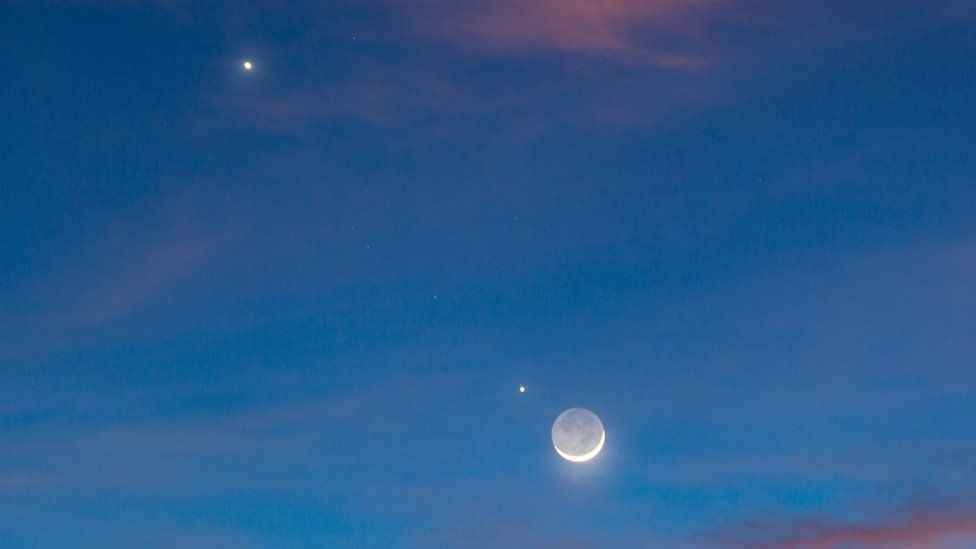 Empics
EmpicsFive major planets in our solar system are lined up in a row for a rare planetary conjunction visible with the naked eye.
In a clear sky, Mercury, Venus, Mars, Jupiter, and Saturn can be seen shining before dawn.
It's a special opportunity to see Mercury, which is usually obscured from view by the Sun's bright light.
The conjunction was brightest on Friday morning but will remain visible until Monday from most parts of the world.
The last time this conjunction happened was 2004 and it won't be seen again until 2040.
The planets appear "like a string of pearls spread out from close to the horizon", explains space scientist and chief stargazer at the Society for Popular Astronomy Prof Lucie Green.
It is also a special event because the planets appear in the order they are positioned from the sun.
That isn't always the case for planetary conjunctions because of our perspective from Earth looking into the solar system, Prof Green says.
On Friday a crescent Moon also joined the line-up, appearing between Venus and Mars.

The northern hemisphere, including the UK, can get the best views between 45 and 90 minutes before sunrise. Look eastwards and very close to the horizon, ideally from a high spot like a hill. Large buildings or trees will obscure the view. You'll need to rise early, because as soon as the sun comes up it will wash out the sky, obscuring the planets.
But they can be seen with the naked eye - Prof Green advises sky-gazers not to use equipment like binoculars or telescopes because of the risk of looking directly into the Sun.
Start by looking for the planet furthest away, which is Saturn. Then count back through the planets until you find Venus, which is usually very bright.
The final planet in the line-up should then be Mercury. Prof Green says it took her many years to see it because it's a hard planet to spot. "It is very satisfying if you can see this faint twinkling planet," she says.
Observers in the tropics and the southern hemisphere should get better views because the planets will rise higher in the pre-dawn sky, but an early start will still be needed.

Did you take a photograph of the conjunction? Will you be trying to over the weekend? Email haveyoursay@bbc.co.uk with your pictures.
Please include a contact number if you are willing to speak to a BBC journalist. You can also get in touch in the following ways:
- WhatsApp: +44 7756 165803
- Tweet: @BBC_HaveYourSay
- Upload pictures or video
- Please read our terms & conditions and privacy policy
https://news.google.com/__i/rss/rd/articles/CBMiNWh0dHBzOi8vd3d3LmJiYy5jb20vbmV3cy9zY2llbmNlLWVudmlyb25tZW50LTYxOTEwOTc30gE5aHR0cHM6Ly93d3cuYmJjLmNvbS9uZXdzL3NjaWVuY2UtZW52aXJvbm1lbnQtNjE5MTA5NzcuYW1w?oc=5
2022-06-24 10:00:50Z
1471090051
Tidak ada komentar:
Posting Komentar